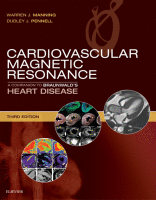Physical Address
304 North Cardinal St.
Dorchester Center, MA 02124

The physiologic basis for and the general principles of myocardial perfusion cardiovascular magnetic resonance (CMR) are covered in detail in other chapters. The key challenge of first-pass dynamic contrast-enhanced acquisition is to capture data with high temporal and spatial resolution…

Introduction The concept of injecting a tracer into the blood stream and detecting its transit and distribution in the heart muscle for the assessment of myocardial perfusion is well established in nuclear cardiology and cardiovascular magnetic resonance (CMR). Both exogenous,…

Although currently not approved by the US Food and Drug Administration (FDA) for cardiac imaging, the vast majority of cardiovascular magnetic resonance (CMR) studies use a gadolinium-based contrast agent. The CMR contrast agent typically makes diseased tissue appear brighter (or…

Many disease processes alter the local molecular environment of the myocardium, and consequently the longitudinal (T1) and transverse (T2) relaxation times can change. While such changes may be observed directly as changes in image contrast, the tissue processes may be…

Introduction This introduction to the basic principles of cardiovascular magnetic resonance (CMR) describes the concepts of magnetization, T1, T2, T2*, and image formation, and describes some common CMR pulse sequences and parameters. These basic ideas will require some time and…